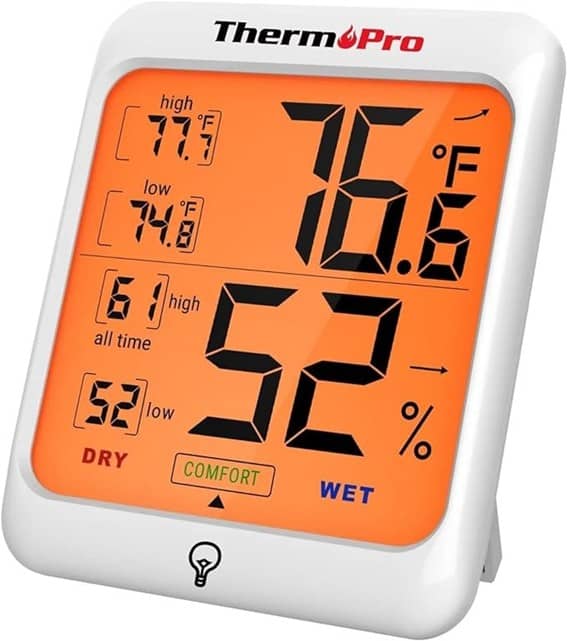Did you know that proper wine storage can increase the value of your collection by up to 20%?
As a wine enthusiast for many years, I’ve learned that organizing your wine fridge isn’t just about aesthetics – it’s about protecting your investment and enhancing your wine experience. According to Wine Spectator, nearly 40% of wine collectors cite improper storage as their biggest regret.
Let me share my expertise on how to organize wine fridge and transform it into a wine cellar that both preserves and showcases your precious bottles.
Welcome to Didi Somm, and Cheers!
Important Notice: The information in this article is for general and public information purposes only. It solely reflects Didi Somm’s or his Staff’s opinion, and no responsibility can be assumed for errors or omissions in the service’s contents. For details, please check the Disclaimer at the bottom of the homepage.

Affiliate Disclaimer: This page may include Affiliate links, meaning that we get a commission if you decide to purchase through this site at no extra cost to you. Please read our Disclaimer for your info.
Key Takeaways
- Temperature zoning is crucial for optimal wine storage and aging
- Proper bottle placement prevents sediment buildup and cork drying
- Digital inventory systems streamline collection management
- Regular maintenance ensures consistent storage conditions
- Strategic organization maximizes storage capacity
Understanding Your Wine Fridge’s Layout
When I first invested in a wine fridge, I made the rookie mistake of treating it like a regular refrigerator – boy, was that a learning experience! After years of collecting and storing wines, I’ve discovered that understanding your wine fridge’s layout is crucial for optimal storage.
Most modern wine fridges come in either single-zone or dual-zone configurations. Single-zone fridges maintain one consistent temperature throughout, typically around 55°F (13°C), making them perfect for long-term storage of primarily red wines. Dual-zone fridges, my personal favorite, offer separate temperature controls for different wine types. In my dual-zone setup, I keep the upper zone at 45-50°F (7-10°C) for white wines and champagnes, while the lower zone stays at 53-57°F (12-14°C) for reds.
Understanding these zones has been a game-changer for proper wine storage. I’ve learned to map out storage sections based on bottle types, using the wider shelves for Burgundy-style bottles and adjustable racks for those tricky Champagne bottles.
Speaking of space optimization, I’ve found that most wine fridges can accommodate about 25% more bottles than their stated capacity if you carefully plan your vertical and horizontal spacing. Just remember to maintain proper airflow!
The humidity control feature, usually maintaining 60-70% humidity, is your best friend in preventing dried-out corks and label damage.

Creating an Effective Organization System
Let me tell you about the time I spent hours searching for a specific bottle of Bordeaux for a dinner party, only to find it buried behind dozens of other wines! That frustrating experience taught me the importance of having a rock-solid organizational system.
Now, I organize my collection using a hybrid method that combines varietal, region, and vintage. The top shelves are dedicated to ready-to-drink wines – those special bottles you want easy access to for impromptu celebrations or dinner parties. Below that, I arrange wines by region, with French wines on one side and New World wines on the other. Each section is further organized by varietal and vintage.
I’ve developed what I call the “rotation rhythm” – every three months, I gently rotate the bottles and update my inventory. One of my best discoveries was using removable cellar tags that hang around the bottle necks. These tags include essential information like vintage, drink-by dates, and any special notes.
Pro Tip: Use a waterproof marker to prevent smudging in the humid environment! The secret to a successful wine organization isn’t just about creating a system; it’s about maintaining it consistently.
| Organizational Step | Details |
|---|---|
| Top Shelf | – Store ready-to-drink wines for easy access. – Ideal for impromptu celebrations and dinner parties. |
| Middle Shelves | Organize wines by region: – French wines on one side. – New World wines on the other. |
| Further Sorting | Within each region: – Sort by varietal (e.g., Cabernet, Chardonnay). – Sort by vintage (year). |
| Rotation Rhythm | Every 3 months: – Gently rotate bottles. – Update inventory list. |
| Bottle Tags | Use removable cellar tags with: – Vintage – Drink-by dates – Special notes |
| Pro Tip | Use a waterproof marker to prevent smudging in humid environments. |
| Maintenance | Consistently follow and update the system to ensure efficiency. |
Optimal Bottle Placement Techniques
After accidentally knocking over a precious bottle of aged Barolo (still hurts to think about it!), I learned the hard way about proper bottle placement techniques.
Here’s what years of experience have taught me: Start by positioning standard Bordeaux-style bottles horizontally, ensuring the wine stays in contact with the cork. For uniquely shaped bottles like those from Champagne or Burgundy, I dedicate specific shelves with adjusted spacing.
When it comes to stacking, I follow the “3-2-1 rule” – never stack more than three bottles horizontally for standard wines, two for wider bottles, and keep those special vintage bottles in single layers. Oversized bottles and champagne always go on the bottom shelves where the structure is strongest. This placement also helps minimize the impact of vibrations, which can disturb wine sediment and affect aging.
I maintain a minimum one-finger width space between bottles to ensure proper air circulation and make it easier to remove bottles without disturbing others. Remember, every time you move a bottle, you’re potentially affecting its aging process, so handle it with care!

Digital and Physical Inventory Management
Managing my wine collection used to be a chaotic mess of handwritten notes and forgotten bottles until I embraced the digital age!
Wine Apps
These days, I use a combination of digital and physical tracking systems. I’ve tested numerous wine apps but found CellarTracker to be my go-to for its comprehensive database and user-friendly interface. However, I always maintain a physical backup – a leather-bound notebook with detailed information about each bottle, complete with tasting notes and optimal drinking windows.
QR Code System
For quick reference, I’ve implemented a QR code system: Small, waterproof QR code stickers on each shelf link to detailed information about the wines in that section. This hybrid approach has saved me countless hours of searching and helped me track my collection’s value, which has become increasingly important for insurance purposes.
Drinking Window Alerts
The real game-changer was setting up drinking window alerts – now, I never miss a wine’s peak drinking period. Remember to update both digital and physical records whenever you add or remove a bottle!

Maintenance and Monitoring
If there’s one thing I’ve learned from maintaining a wine collection, it’s that prevention is better than cure!
I keep a digital thermometer with humidity tracking in each zone of my wine fridge, checking the readings twice a week. The sweet spot is maintaining temperatures within 2 degrees of your target and humidity between 60-70%.
I’ve developed a cleaning routine that works like a charm: monthly quick-cleans for removing dust and checking seals, and quarterly deep-cleans where I remove all bottles (perfect time for inventory updates!) and sanitize all surfaces with a gentle, unscented cleaner.
Equipment maintenance is crucial – I learned this the hard way when my first wine fridge failed during a summer heatwave. Now, I clean the condenser coils every six months and have the cooling system checked annually by a professional.
For emergency backup plans, I keep a battery-powered temperature monitor with alarm capabilities and have an agreement with a local wine storage facility for temporary storage if needed. Trust me, when you’re protecting hundreds or thousands of dollars worth of wine, these precautions are worth every penny!
Maintenance and Monitoring Guide
| Aspect | Practices | Frequency | Notes |
|---|---|---|---|
| Temperature & Humidity | – Use a digital thermometer with humidity tracking. – Maintain 60-70% humidity. – Keep temps within ±2°F of target. | Twice per week | Ensures optimal wine preservation. |
| Cleaning Routine | – Monthly Quick-Clean: Dust removal, seal checks. – Quarterly Deep-Clean: Remove bottles, sanitize surfaces. | Monthly/Quarterly | Use gentle, unscented cleaners. Perfect for updating inventory during deep-clean. |
| Equipment Maintenance | – Clean condenser coils. – Professional cooling system check. | Every 6 months / Annually | Prevents breakdowns and ensures efficiency. |
| Emergency Backup Plan | – Battery-powered temperature monitor with alarm. – Agreement with local wine storage for emergencies. | As needed | Protects valuable collection during unexpected issues like fridge failure or power outages. |
Key Takeaways
- Consistency: Regular checks and cleaning prevent costly issues.
- Preparedness: Emergency plans save time and money during unexpected failures.
- Attention to Detail: Small steps like monitoring humidity can have a big impact on wine longevity.
FAQ – Organize Wine Fridge
- What is the ideal temperature for a wine fridge? The ideal temperature range is 45-65°F (7-18°C), with different zones for red, white, and sparkling wines.
- How should I organize different types of wine? Organize by varietal, region, or drinking window, with frequently accessed wines at eye level.
- Can I store both red and white wines in the same fridge? Yes, if your wine fridge has dual or multiple temperature zones.
- How often should I rotate my wines? Check your collection monthly and rotate bottles every 3-6 months.
- What’s the best way to label wine bottles in storage? Use removable tags or a digital system with QR codes for easy identification.
- How many bottles can I stack safely? Stack no more than 3-4 bottles horizontally, depending on bottle shape and shelf strength.
- Should I keep an inventory list? Yes, maintain both digital and physical inventory records for insurance and tracking purposes.
- How do I prevent cork drying? Store bottles horizontally to keep corks moist and maintain proper humidity levels.
- What’s the optimal humidity level for wine storage? Maintain 60-70% humidity in your wine fridge.
- How do I maximize storage space? Use bottle stackers, custom shelving, and organize by bottle shape.
- Can I store opened bottles in the wine fridge? Yes, but use vacuum stoppers and consume within 3-5 days.
- How often should I clean my wine fridge? Clean every 3-4 months and deep clean annually.
- What’s the best way to organize champagne bottles? Store champagne bottles at the bottom of the fridge where it’s coldest.
- How do I track drinking windows? Use a wine app or spreadsheet to monitor optimal drinking dates.
- Should I keep boxes and certificates? Yes, store original packaging and documentation separately for valuable wines.
Conclusion
Organizing your wine fridge is an investment in your collection’s future.
By implementing these systematic approaches to storage, tracking, and maintenance, you’ll not only protect your wines but also enhance your overall wine experience.
Remember, a well-organized wine fridge isn’t just about storage – it’s about creating a seamless connection between you and your carefully curated collection.
Start implementing these strategies today, and you’ll discover the joy of having a perfectly organized wine collection at your fingertips.
Good luck, enjoy, and Cheers!
For your reference, the latest articles by Didi Somm include:
- Top 5 Dual-Zone Wine Refrigerators: Best Expert Guide for You
- Best Energy-Efficient Wine Fridges: Get Expert Tips And Advice
- How to Clean Wine Refrigerator: Best Expert Guide
- Best Wine Fridge Temperature Settings: All You Need To Know
- Built-in Wine Refrigerators: All You Need To Know
- Compact Wine Fridges: Best Advice For You
Important Notice: The information in this article is for general and public information purposes only. It solely reflects Didi Somm’s or his Staff’s opinion, and no responsibility can be assumed for errors or omissions in the service’s contents. For details, please check the Disclaimer at the bottom of the homepage.



